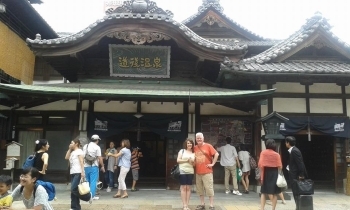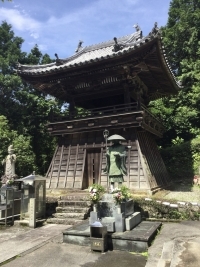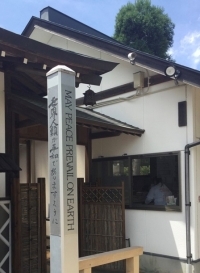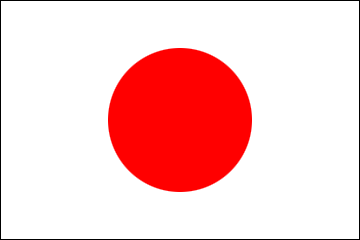JET Programme: Experiences
The Japan Exchange and Teaching (JET) Programme application window is open from late September/early October to November every year. Please check the website for more details on this year's application period. Below you can read about former JET Helena Fearnley-san’s experiences as an ALT/CIR in Matsuyama City, Ehime Prefecture.
Life on the Pine-Tree-Mountain: Impressions of Five Years in Matsuyama
Helena Fearnley (Matsuyama, 2011-2016)
I firmly hold that it was due to a small mental glitch in my interview that I ended up with my placement. When asked to name Japan’s four main islands I skipped along through the first three, then stuttered and blushingly admitted I couldn’t remember the one that started with “shi…”
 And so I found myself on the island of Shikoku, placed in Matsuyama City in Ehime Prefecture – famous for mandarin oranges, and for Dogo Onsen, the hotspring whose design inspired Yubaba’s Bath house in Spirited Away. Matsuyama is Ehime’s capital city, one of the largest on Shikoku. Surrounded by mountains (the city’s name literally means “pine-tree mountain”), the majority of the city is built on flat land, with the castle hill jutting up in the centre. I came from a village on the edge of the Peak District, so hills were not unusual to me, but back there the only night time intrusions were the lowing of cows and sheep… and the occasional bat flying into one’s face! My house in Matsuyama was a fifteen minute walk from the city centre and just off one Ehime’s main roads, which spread three-lanes deep either side. The noise rose and fell all night, and it was always bright enough to see by… though this might have been down to the 24-hour laundrette and vending machine directly beside by building (by the end of my first week, I admitted defeat and ended up buying blackout curtains!).
And so I found myself on the island of Shikoku, placed in Matsuyama City in Ehime Prefecture – famous for mandarin oranges, and for Dogo Onsen, the hotspring whose design inspired Yubaba’s Bath house in Spirited Away. Matsuyama is Ehime’s capital city, one of the largest on Shikoku. Surrounded by mountains (the city’s name literally means “pine-tree mountain”), the majority of the city is built on flat land, with the castle hill jutting up in the centre. I came from a village on the edge of the Peak District, so hills were not unusual to me, but back there the only night time intrusions were the lowing of cows and sheep… and the occasional bat flying into one’s face! My house in Matsuyama was a fifteen minute walk from the city centre and just off one Ehime’s main roads, which spread three-lanes deep either side. The noise rose and fell all night, and it was always bright enough to see by… though this might have been down to the 24-hour laundrette and vending machine directly beside by building (by the end of my first week, I admitted defeat and ended up buying blackout curtains!).
If I peered over the edge of my balcony and looked down the street, I could see the local elementary school just down the road, the cars zipping past on the main road, and the back of the electronics store and supermarket (the both of which saw a lot of my monthly paycheck!). And yet around the back? I had neighbours with fruit trees – loquats (‘biwa’) and lemons – which would always end up in bags dangling from the surrounding neighbours’ front doors. There was tilled earth where a granny and grandpa used to grow cabbages and aubergines; and in the block beyond? A rice paddy, small in size, but an ecosystem all of its own once flooded. I still remember the rainy-season frogs croaking to drown out the traffic in summers, and how someone in one of the other houses used to practice the shamisen while the rain fell. It was strange being surrounded by such extremes at first. Though I’m back in England now, I catch myself listening out in vain for these sounds every rainy day!
I was one of twenty-four ALTs visiting the mix of eighty-five schools in the area – generally, we each taught at three schools or so a year, and all of mine, barring the additional “mountain schools” from my final two years, were within a bikeable distance. Changing schools every year was always difficult, and I will attest strongly to Japan making a crybaby out of me, as the tears got worse every year! But at each new school I got to show my kids something strange or new – one of my mainstays, for example, was a short cooking class for culture day, culminating in a “British Style Tea Ceremony” and a short presentation on British foods (the idea of dunking our newly-made biscuits into tea was received well, albeit with caution; but the concept of rice pudding was met with horrified outcry and near-rebellion pretty much every time!).
 In my final year I started pursuing another of Shikoku’s claims to fame – o-henro, a Buddhist pilgrimage of eighty-eight temples, traditionally completed on foot over forty days. I knew from the start that “on foot over forty days” was never going to happen, and even the “eighty-eight” was iffy, but after trying a taster experience in September 2015, about eleven months before my journey home, I decided it might be worth trying to visit as many as possible… somehow. In early 2016, I saw adverts for o-henro coach tours, and that was when the planning began! From March that year, I was spending my weekdays at school, and every other weekend on a coach packed with grannies and grandpas who, all thirty-odd of them, basically took me in. Where I couldn’t manage a temple, I researched how to make my own way there, and if I couldn’t manage that, I had fellow o-henro participants and even a co-worker helping me get to temples. The final tally? 81/88 over the space of five months, with my final temples being visited on the day I had arranged for the post-office to collect my gear (amongst which, a wooden stick known as the “kongo-zue” representing the first o-henro supporting the pilgrims’ steps).
In my final year I started pursuing another of Shikoku’s claims to fame – o-henro, a Buddhist pilgrimage of eighty-eight temples, traditionally completed on foot over forty days. I knew from the start that “on foot over forty days” was never going to happen, and even the “eighty-eight” was iffy, but after trying a taster experience in September 2015, about eleven months before my journey home, I decided it might be worth trying to visit as many as possible… somehow. In early 2016, I saw adverts for o-henro coach tours, and that was when the planning began! From March that year, I was spending my weekdays at school, and every other weekend on a coach packed with grannies and grandpas who, all thirty-odd of them, basically took me in. Where I couldn’t manage a temple, I researched how to make my own way there, and if I couldn’t manage that, I had fellow o-henro participants and even a co-worker helping me get to temples. The final tally? 81/88 over the space of five months, with my final temples being visited on the day I had arranged for the post-office to collect my gear (amongst which, a wooden stick known as the “kongo-zue” representing the first o-henro supporting the pilgrims’ steps).
 While it is not unusual for foreigners to engage in o-henro – many foreigners living in Shikoku do, as a minimum, visit a few of the more famous temples during their time there – foreign o-henro participants are still vastly outnumbered by Japanese ones. There has been a move, in recent years, to register o-henro as one of UNESCO’s intangible World Heritages, and also to make it more accessible to foreigners. Certainly these are not mutually exclusive goals, and accessibility to foreigners is something that Japan is continuing to work on.
While it is not unusual for foreigners to engage in o-henro – many foreigners living in Shikoku do, as a minimum, visit a few of the more famous temples during their time there – foreign o-henro participants are still vastly outnumbered by Japanese ones. There has been a move, in recent years, to register o-henro as one of UNESCO’s intangible World Heritages, and also to make it more accessible to foreigners. Certainly these are not mutually exclusive goals, and accessibility to foreigners is something that Japan is continuing to work on.
It was strange to watch the city change over the five years I spent there – although the highway signs were in Japanese and English, much of the signage in the city proper was still only in Japanese when I arrived, with signs and text on public transport gradually getting replaced with English/Japanese versions as time went on. In my fourth year, I was given the task of translating the room names for my previous year’s school (which had grown beyond its means and was relocated to a new site). The English here was highly unusual as most schools only use Japanese signage. This was one of two newly-rebuilt schools in the area that also used English – I was lucky enough to get to teach at the other, an elementary school, and my students and their parents were certainly conscious of and interested in the changes, especially in light of the many international events Japan will host in the coming years.
With the Rugby World Cup and the Olympic and Paralympic Games drawing closer, Japan will certainly become an even more interesting place to live and work, and people’s minds are on internationalisation more than ever before. This makes the JET Programme’s place in promoting internationalisation all the more prominent, and promises even more exciting opportunities for cultural exchange in the future.
Helena Fearnley (Matsuyama, 2011-2016)


